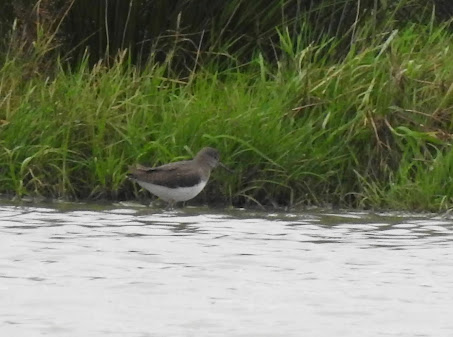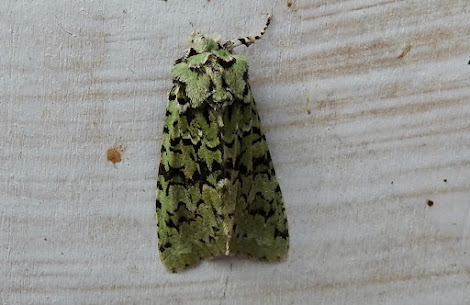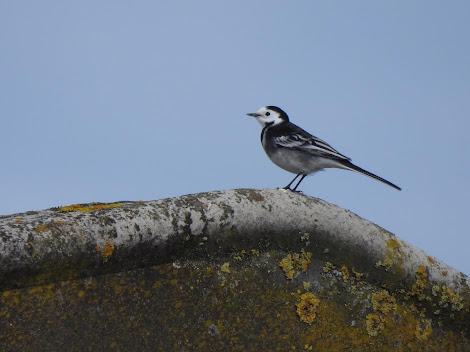It's that slightly annoying time of year when I find myself waiting impatiently for the first winter visitors to turn up, while at the same time the summer migrants have gone. So I arrived this morning expecting a pretty ordinary visit.
For the first hour the breeze was very light and from the south-west, so I started logging Meadow Pipits for something to do. It was pretty unspectacular, and there had been 23 by the time the cloud rolled away and blue skies made it harder to spot them. A few Chaffinches and a calling Siskin were also considered signs of visible migration.
Dave had joined me and we ambled north through the chat field, logging Chiffchaffs (eight eventually), and Jays. The latter became a source of amusement as we never saw more than four in one go, but I eventually claimed a total of 12 (or the same four making three circuits according to Dave).
Our day perked up still further as we spotted a Whitethroat in exactly the same bushes as I had seen it two visits ago. An October Whitethroat in the Midlands is a bit special. I may have seen such a late one before, but I can't remember doing so. A bit of research may be required...(Birdtrack tells me I saw one on October 4 1998 at Childswickham in Worcs). Also needed was a convincing record shot, and to that end we tried to keep on it as it disappeared up the hedgerow.
In the course of our search we flushed a Wheatear. That too disappeared in the instant we found it, the only Wheatear to have been seen here this autumn. Eventually we split up, and my search took me beck to the original spot, where the Whitethroat reappeared and I got my shot.
 |
| Whitethroat |
At around this time, Dave spotted a brown dot on the horizon of the weedy field. The camera confirmed it was the Wheatear and not one of the Skylarks which seemed more plentiful today. I set off in stalking mode and eventually got a picture sufficient to rule out any possibility it could be one of the rarer Wheatears (we can still dream).
 |
| Northern Wheatear |
A couple of Swallows appeared, and raced across the field. The day was really starting to have a good feel about it.
In terms of Morton Bagot, the rarest bird of the day was first noticed as a shadow passed across us. We looked up to see an adult Common Gull heading south. Yes I know, just a Common Gull, but the first of the autumn and a bird barely registering on Dave's Morton Bagot list.
The flash field yielded 23 Lapwings, just six Teal, four Snipe, a Green Sandpiper, and a Grey Heron. But we weren't quite finished. Another Swallow headed south, and then first one, and later another four House Martins.
I was determined to find a Blackcap to add to the warbler list, but as the wind got up the best we could manage was to consider whether some sub-song coming from a hedge bordering the ridge field was this species. We also saw a couple of male Stonechats, and a Cormorant.
Several Common Darters, and a few Speckled Woods are still on the wing, all contributing to the illusion that winter is still far away.
































